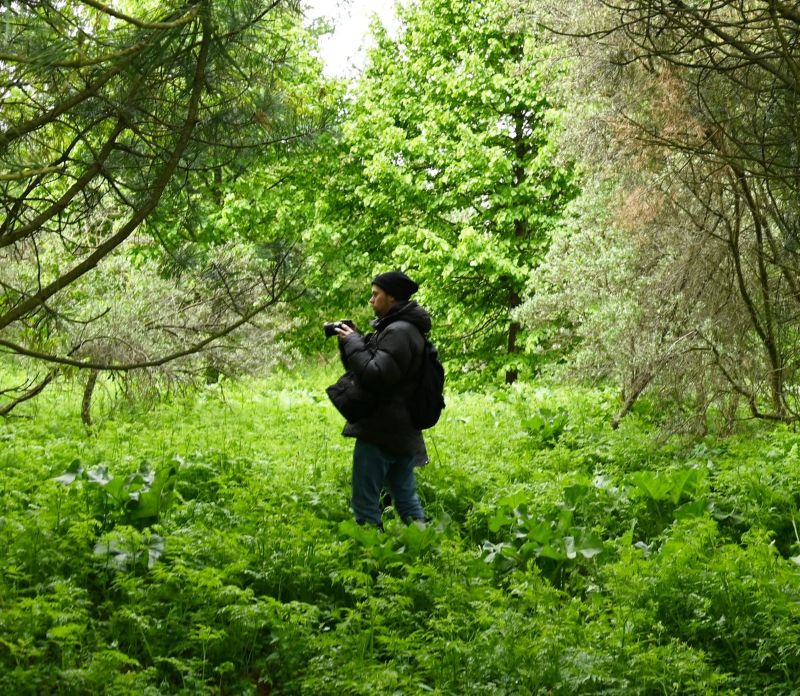Landscape architect
"Landscape architects need good spatial perception and expertise in natural sciences but, most importantly, an interest in aesthetics, architectural theory and urban outdoor environments."

- Rolf Autio
- Works as a landscape architect at Maisema-arkkitehtitoimisto Maanlumo Oy.
- Graduated as a landscape architect from Aalto University.
- Five years of work experience in the field.
Briefly explain what you do for a living.
I work as a landscape architect in a company that mainly draws up plans for outdoor spaces in urban environments. The sites may include parks, squares, yards and sports venues. Additionally, I produce interim plans for spaces that will only be built years later. I also take part in design contests as one of our agency’s team.
My role is that of the so-called project architect. It means that I manage the project as a whole, including conceptualisation, planning and administrative matters. Administrative work involves interaction between different planning teams, drawing up agendas for meetings and writing minutes.
In a career as a landscape architect, you typically first gain experience in drawing, after which you become a project architect. A project architect’s tasks also include giving instructions and providing advice for new landscape architects in their work.
I also teach future landscape architects at Aalto University.
How have you ended up in the profession of your choice?
I always liked drawing, which is why I ended up in a general upper secondary school focusing on visual arts. I took architectural courses at school and found them very interesting. I was also interested in studying natural sciences, however. At the same time, biodiversity loss and other environmental issues were on my mind. Towards the end of my time at upper secondary school, studies in landscape architecture emerged as my number one choice as they allowed me to combine all these interests.
Describe your typical working day or week.
One half of my working week is spent on researching, reading and analysing information. I additionally draw both by hand and on a computer. I also find out about the topography of the site and history of the area, and I check if there are similar international projects. About a quarter of my time is taken up by meetings and interaction with other people. Most of all I keep in touch with my team as we try to develop the best possible design solutions together and discuss the progress of our projects. My typical working week also includes presenting ideas and findings to the customer or design team members, such as engineers, architects, lighting designers and geo designers.
In addition to office work I conduct field visits and field surveys. I visit a site two to three times during the project and usually spend the whole day outdoors on each visit.
Teaching is very different, as it provides a refreshing counterbalance for a landscape architect’s work. When I am teaching, I get to be centre stage, interact spontaneously with students, and expand my knowledge while preparing my lectures.
What kind of work environment or working hours do you have?
I mainly work in the office, but I also visit different cities and municipalities around Finland. Sometimes I go abroad with my colleagues in search of inspiration.
I work flexitime, which means my working hours are relatively adaptable. I get paid per hour, and I aim to do about five days a week. I can also work remotely if I wish.
What kind of competence or qualities are required in the profession?
Landscape architects need good spatial perception and expertise in natural sciences but, most importantly, an interest in aesthetics, architectural theory and urban outdoor environments. Understanding natural processes is also essential, for example to perceive the direction of run-off waters or to assess temporal processes, such as the development of vegetation or durability of materials.
What is the best thing about your profession?
The best part is when you finish a job and see the end result in an urban environment. Starting a new project from a scratch is also inspiring.
What are the downsides of the profession or what seems challenging?
Landscape architects have their share of responsibility for nature and showing respect for it in their designs. What annoys me is when the customer prioritises the price tag, meaning that we have to compromise on material durability or the number of green areas.
What would you tell a person considering the profession of a landscape architect?
Outdoor environments are important to people and provide a setting for many activities, such as social interaction and hobbies. By their work, a landscape architect can not only manage natural processes but also influence the comfort and functionality of outdoor spaces and the smooth running of people's everyday lives. You can also combine your personal interests and passions with design work. Skateboarding is one of my interests, and I have had the opportunity to design several skateparks.
How do you see the future of your profession?
Landscape architect is a profession of the future. People are gradually beginning to understand the importance of urban ecology, and landscape architects have many solutions for reconciling nature and the city. For example, good planning can help mitigate the impacts of extreme weather events and exacerbating floods caused by climate change.
